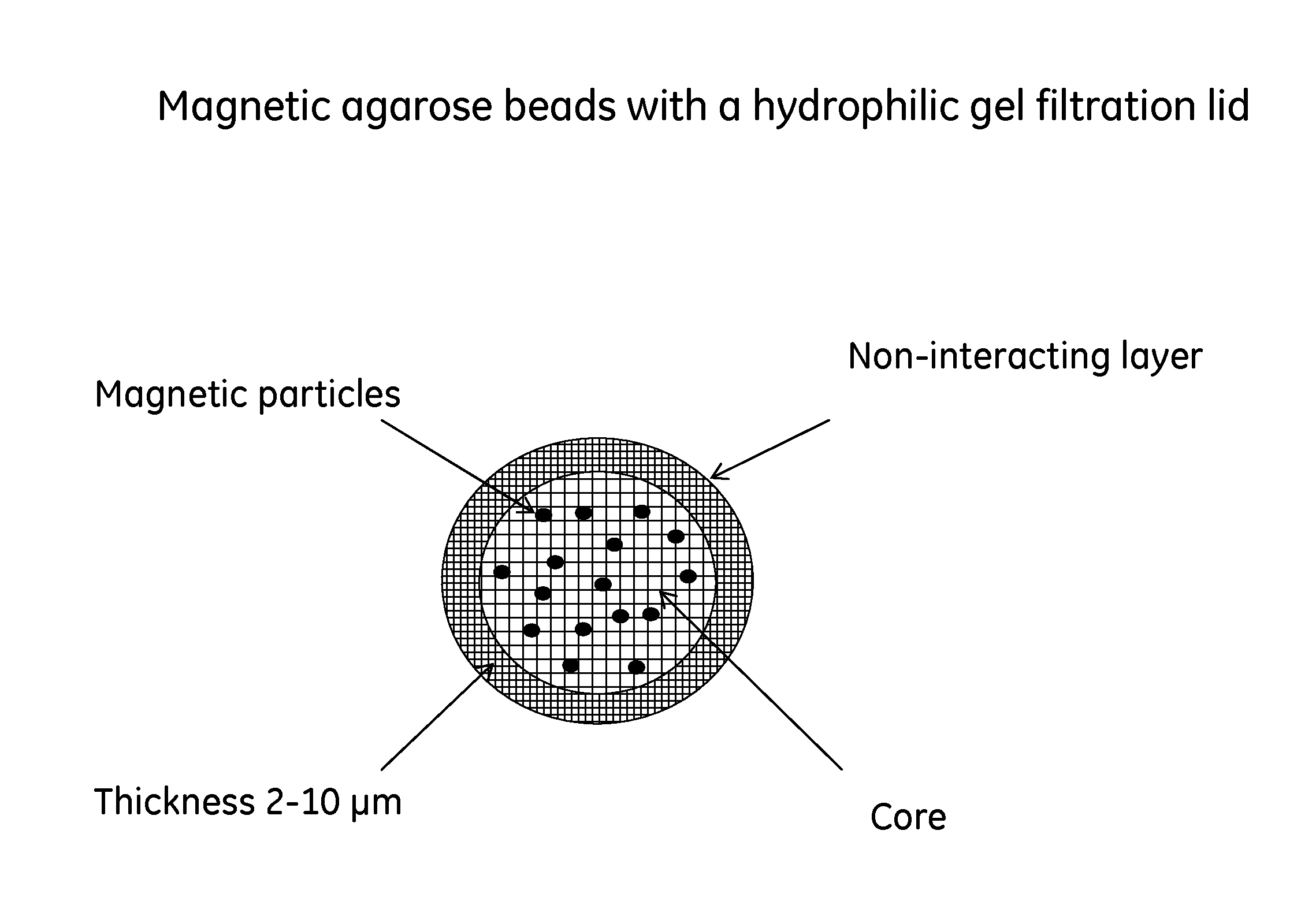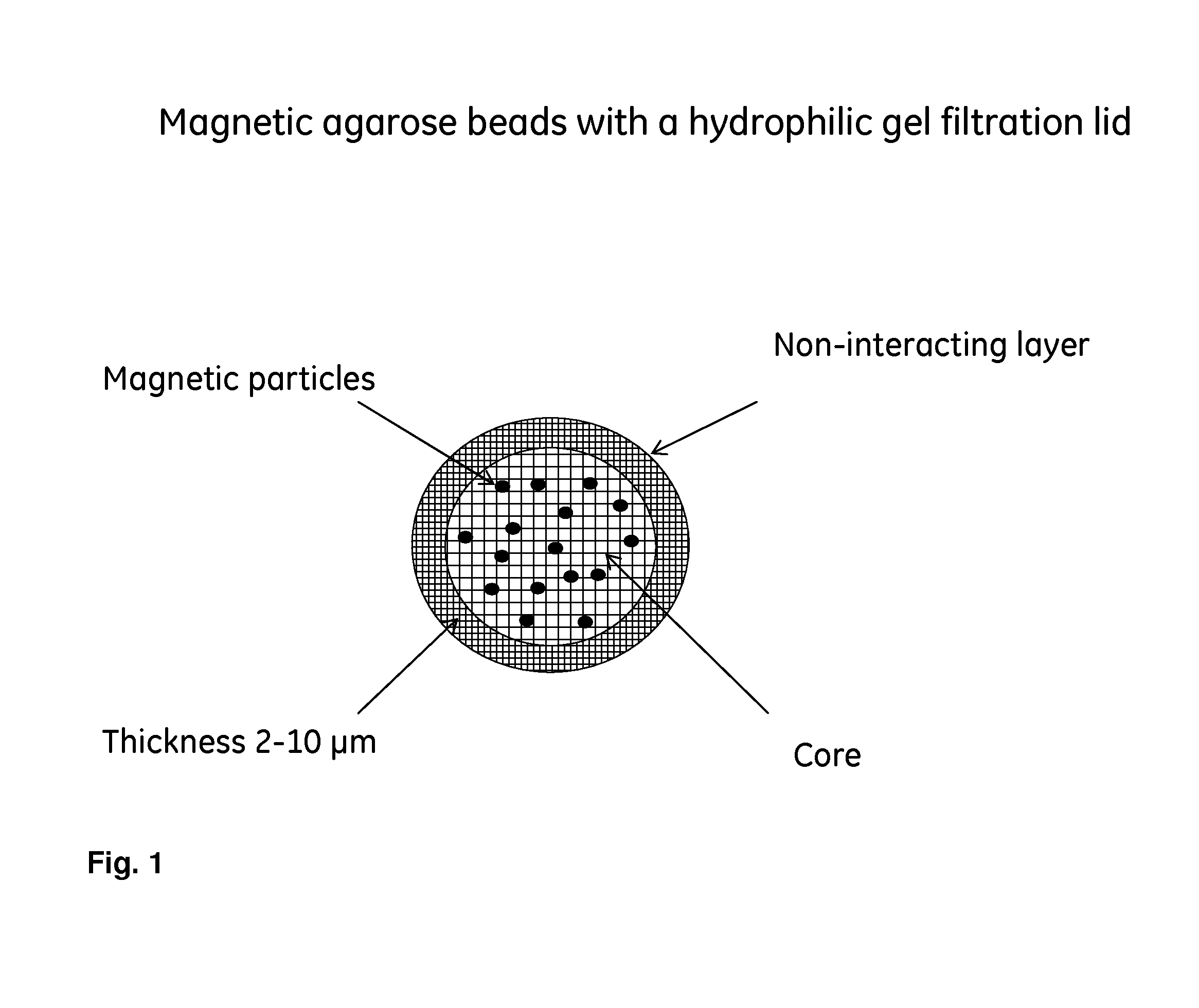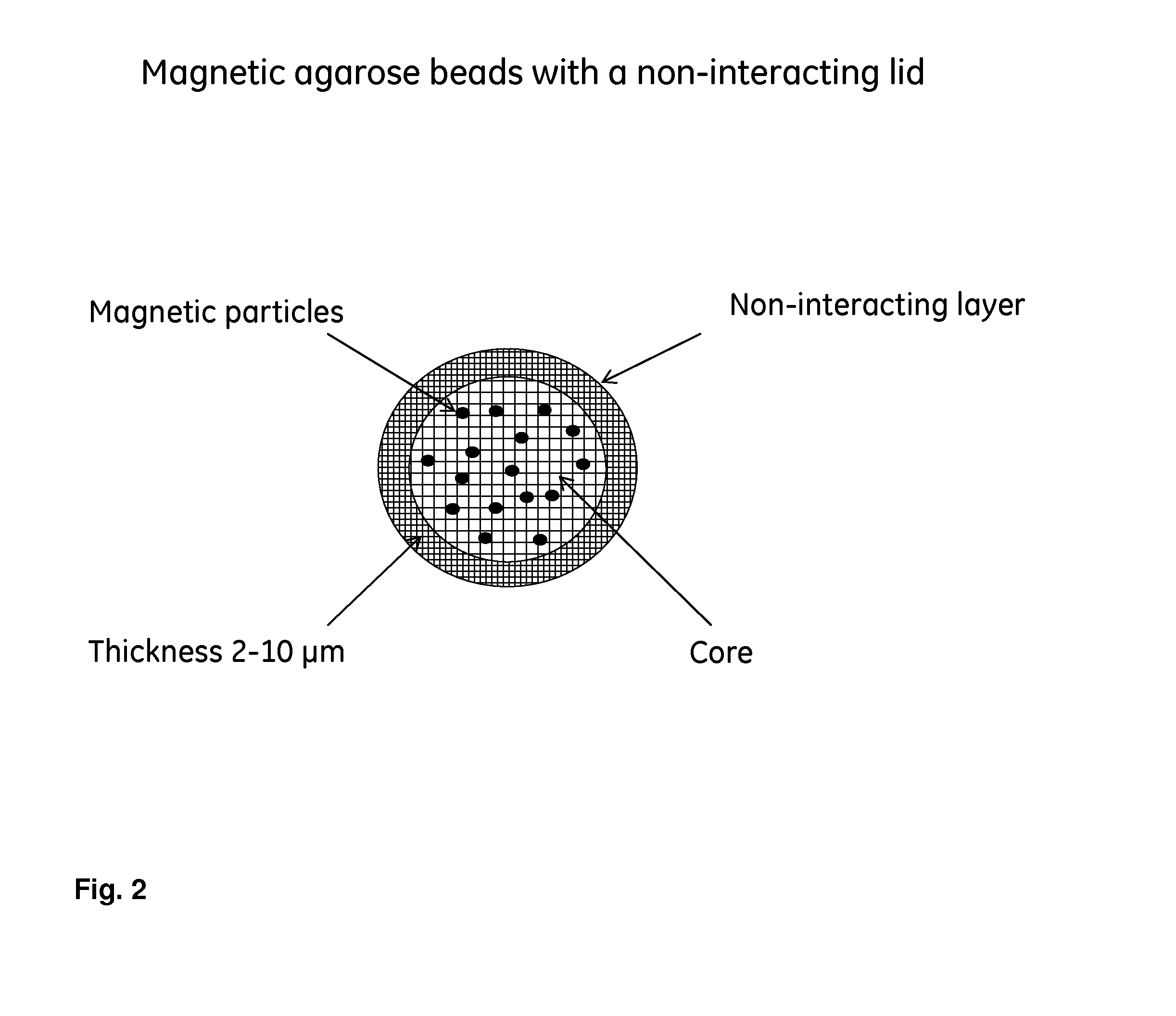Method and means for sample preparation
- Summary
- Abstract
- Description
- Claims
- Application Information
AI Technical Summary
Benefits of technology
Problems solved by technology
Method used
Image
Examples
example 1
Preparation of Agarose Magnetic Shell Media Based on —SO3− Ligands in the Core of the Beads
[0030]This example illustrates the synthesis of beads presented in FIG. 1.
Production of Magnetic Agarose Beads
[0031]About 50 g of iron oxide particles (particle size 1.5 μm) were added to an agarose solution containing agarose (117 g) and water (500 g). The solution was adjusted to 95° C. This solution was thereafter added to a solution of toluene (1420 ml) and ethyl cellulose (106 g) in a vessel equipped with a stirrer, while the temperature was kept at 75° C. The stirrer speed was increased until desired particle size was obtained. The emulsion was thereafter cooled to room temperature. Beads were washed with ethanol and water.
[0032]To washed beads (500 mL) water (100 mL), Na2SO4 (74 g), 50% NaOH (6 mL) and NaBH4 (0.5 g) were added. The temperature was increased to 50° C. and epichlorohydrine (61 mL) and sodium hydroxide (42 mL) were added. After the addition was completed the reaction was l...
example 2
Preparation of Dextran Magnetic Shell Media Based on —SO3− Ligands in the Core of the Beads
[0038]This example presents a synthesis procedure of beads as illustrated in FIG. 2. The synthesis is designed to obtain a bead with a porosity corresponding to Sephadex G-50 (fractionation range of 1500 to 30000 g / mol) but with iron oxide particles and ligands in the core of the beads.
Production of Dextran Magnetic Beads with a Porosity Corresponding to Sephadex G-50
[0039]About 20 g of iron oxide particles (particle size 1.5 μm) were added to a dextran solution containing water (200 mL), 50% NaOH (13 ml), NaBH4 (0.5 g) and Dextran TF (94 g). This solution was heated to 50° C. and thereafter added to a solution of ethylene dichloride (200 mL) and cellulose acetate butyrate (12 g) in a vessel equipped with a blade stirrer. The stirrer speed was increased until desired particle size was obtained. Thereafter was epichlorohydrine (13 mL) added and the reaction continued at 50° C. for 16 hours. The...
example 3
Chromatographic Evaluation of the Prototype Described in Example 1
[0041]To prove that proteins with a molecular weight larger than about 10 000 g / mol are excluded from the magnetic beads produced according to example 1 the breakthrough capacities for a number of proteins have been tested. The prototype based on magnetic agarose beads (see example 1) were packed in a suitable column and a protein solution was pumped through the column. The mobile phase condition was adjusted to acidic pH to enable all proteins to adsorb to the core ligand (—SO3−).
[0042]The magnetic agarose shell medium to be investigated (Prototype produced in example 1) with respect to breakthrough capacity was packed in HR 5 / 2 columns and the sample solution was pumped at a flow rate of 0.2 mL / min through the column after equilibration with buffer solution. The breakthrough capacity was evaluated at 10% of the maximum UV detector signal (280 nm). The maximum UV signal was estimated by pumping the test solution dire...
PUM
| Property | Measurement | Unit |
|---|---|---|
| Mass | aaaaa | aaaaa |
| Mass | aaaaa | aaaaa |
| Mass | aaaaa | aaaaa |
Abstract
Description
Claims
Application Information
 Login to View More
Login to View More - R&D
- Intellectual Property
- Life Sciences
- Materials
- Tech Scout
- Unparalleled Data Quality
- Higher Quality Content
- 60% Fewer Hallucinations
Browse by: Latest US Patents, China's latest patents, Technical Efficacy Thesaurus, Application Domain, Technology Topic, Popular Technical Reports.
© 2025 PatSnap. All rights reserved.Legal|Privacy policy|Modern Slavery Act Transparency Statement|Sitemap|About US| Contact US: help@patsnap.com



